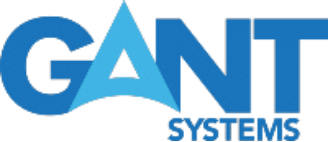In the fast-paced world of technology, the lifecycle of computers plays a crucial role in maintaining efficiency, security, and cost-effectiveness for businesses and individuals alike.
Making strategic decisions about retiring or replacing computer systems requires careful evaluation of various factors. Without a plan for computer end-of-life, businesses risk overpaying for equipment or experiencing slower productivity.
Let’s dive into the best practices for managing end-of-life time frames for computers, helping you make informed decisions that align with your needs and goals.
Understanding End-of-Life for Computers
Computers have a limited lifespan due to hardware degradation, software obsolescence, and reduced performance. End-of-life (EOL) occurs when a computer is no longer viable or cost-effective to maintain, leading to downtime, security risks, and lower productivity.
What factors influence EOL decisions?
Performance Degradation
As computers age, their performance capabilities may decline, leading to slower processing speeds, increased response times, and reduced overall efficiency. The friction your team experiences when their tech is making their job more difficult will also increase over time.
Security Risks
Outdated computers are more susceptible to cybersecurity threats due to unpatched vulnerabilities and lack of support for newer security features. With security threats on the rise, you can’t afford to lose data, encounter a virus that paralyzes your systems, or have your sensitive information exposed.
Software Compatibility
New software applications and operating systems may not be compatible with older computer hardware, limiting functionality and hindering productivity. Patching together operating systems or working around limitations is a big drag on your team’s ability to deliver results.
Total Cost of Ownership
Continued maintenance and repair costs for aging computers can surpass the cost of investing in newer, more efficient systems over time. Calculating the replacement vs maintenance costs can be complex but it’s worth the time to know when to make your move (or, we can provide guidance in this process).
Business Needs
Changes in business requirements, such as increased computing power, advanced graphics capabilities, or mobility features, may necessitate upgrading or replacing existing computers. Managing your computer inventory as your business grows or teams expand is another way to make sure you’re maximizing productivity and budget.
Best Practices for Managing End-of-Life Time Frames
Investing in robust backup and disaster recovery strategies offers several advantages that outweigh the "buy new" thought process:
Data Protection
Regular backups ensure that your critical data is safe and accessible even in the face of hardware failures, cyber-attacks, or natural disasters.
Business Continuity
A well-executed disaster recovery plan minimizes downtime by enabling swift recovery of systems and operations, maintaining business continuity, and reducing the impact on customers and stakeholders.
Cost Efficiency
Compared to the expenses incurred from equipment replacement and data recovery efforts, implementing backup and disaster recovery solutions is a cost-effective long-term investment.
Finding the Balance
- Life Cycle Assessment: Conduct regular assessments of your computer systems to evaluate performance, age, maintenance costs, and alignment with current and future business needs.
- Establish EOL Policies: Develop clear policies and guidelines for determining the end-of-life time frame for computers based on predefined criteria such as hardware age, performance benchmarks, and software compatibility.
- Regular Upgrades: Implement a proactive approach to computer upgrades by replacing aging systems before they reach EOL to minimize disruptions and maximize productivity.
- Data Migration and Backup: Prior to retiring or replacing computers, ensure critical data is securely migrated to new systems and perform comprehensive backups to prevent data loss.
- Secure Disposal: Safely dispose of retired computers by adhering to environmental regulations and employing data erasure techniques to protect sensitive information.
- Invest in Maintenance: For computers approaching EOL but still meeting operational needs, invest in regular maintenance, updates, and security patches to extend their usability.
- Future Planning: Consider future technology trends, such as cloud computing, virtualization, and mobility, when planning for computer replacements to stay ahead of evolving business requirements.
—
Managing end-of-life time frames for computers is a strategic endeavor that requires a proactive approach, thorough assessment, and alignment with business objectives. By understanding the factors influencing EOL decisions and implementing best practices, businesses and individuals can optimize their IT infrastructure, enhance security, and maintain operational efficiency in an ever-evolving technological landscape.
Discover how Gant Systems can revolutionize your EOL management and equipment life cycles. Book a Discovery Call now to dive into the details with one of our IT experts!





